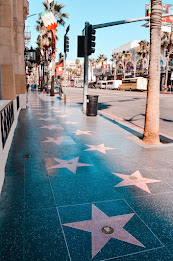March 24, 2022
St. Augustine, Florida
What used to be the Excelsior High School building is now home to the Lincolnville Museum and Cultural Center located in the historic district of Lincolnville in St. Augustine, Florida. In 1925 Excelsior became St. Johns county's first public high school, in 2005 it became the Excelsior Museum and Cultural Center, and the year 2012 brought about the name it is today. The museum's goal is to share the rich African American history stories through their exhibits and programs held on the historical site. Exhibits such as ways of life, the military, and women who made a difference show the evolution of St. Augustine's black history throughout the past 450 years.
Website Link: https://www.lincolnvillemuseum.org/
Artifact 1
During the Civil Rights Movement, a sit-in took place here in St. Augustine, Florida. Above is the same counter and chairs from Woolworth's, a cafe here in town during the time where a sit-in took place. In protest, eight students who attended Florida Memorial College sat at this same lunch counter on March 15, 1960. JoeAnn Anderson Ulmer, Samuel White, Audrey Nell Edwards, and Willie Carl Singleton were called the St. Augustine Four and they were four of the eight students who demonstrated the sit-in. They were arrested and taken to jail.
Artifact 2
Before the Lincolnville Museum and Cultural Center was the museum it holds today, it was the school for black youth in the Lincolnville community in the early 1900s. When Excelsior High School opened in 1925, it was the first black public school in town. The photos on display in the museum show a few of the graduating classes of students. Excelsior High School was an educational institution for over 40 years and educated many who went on to succeed in life.
Exterior 1
Exterior 2
In Conversation Image 1
Outside the Lincolnville Museum and Cultural Center, there are bricks on the ground with writing engraved. Some of these bricks are dedicated to the loving memory of those who have passed before us. The picture above holds Leslie Andrea Jones's loving memory and her legacy of living on through her daughters. The picture next to the bricks is of the stars on Hollywood Boulevard in Los Angeles, California. These plaques reminded me of the bricks outside the museum because they both memorialize and recognize people. Walking on top of people's names makes you reflect and think about them and their memory.
Photo Link: https://www.underlondonlights.com/hollywood-walk-of-fame-stars-handprints/
In Conversation Image 2
Willie Galimore was a graduate of Excelsior High School and made a successful career as an All-American football player. He attended college at Florida A&M and helped the team to win four conference titles and a championship game. He then played for the Chicago Bears starting in 1956. During his time playing for the Bears, Galimore made records and carried the team to victories. He died in July of 1964 while on a training camp in India. He died in a car accident with his teammate John Farrington. After his passing, the No. 28 jersey that Galimore wore was retired in honor of him.
Photo Link: https://imasportsphile.com/nfl-chicago-bears-rb-willie-galimore-willie-the-wisp/
In Conversation Literature
Excerpt from Habitat Threshold
Thirteen Ways of Looking at a Glacier
Craig Santos Perez
"When the glacial terminus broke,
it marked the beginning
of one of many waves."
Though this poem refers to the environment and glaciers, I see the relation to the racial culture that was exhibited in society during the Civil Rights Movement. Years ago when America was battling the segregation of African Americans, movements, protests, and demonstrations were seen happening quite frequently. We see that when one injustice took place, a movement would generate. Just like the sit-in here in St. Augustine, demonstrations such as this were happening all over the country crying out for the fight against segregation. The "glacial terminus breaking" relates to when an unfair event would happen to cause the "beginning of one of many ways." Bigger movements were born from smaller injustices taking place and that connection is referenced in "Thirteen Ways of Looking at a Glacier."













No comments:
Post a Comment